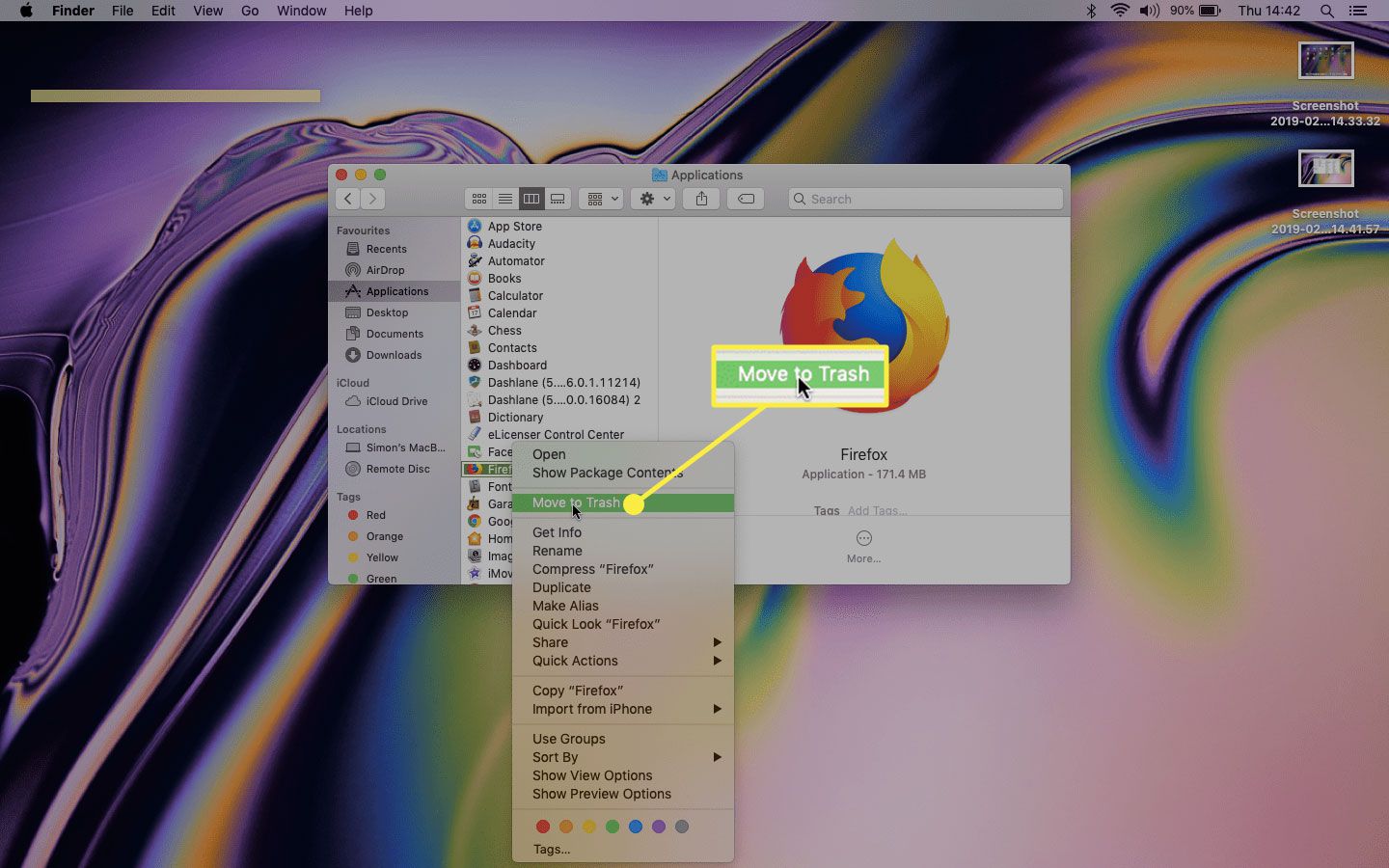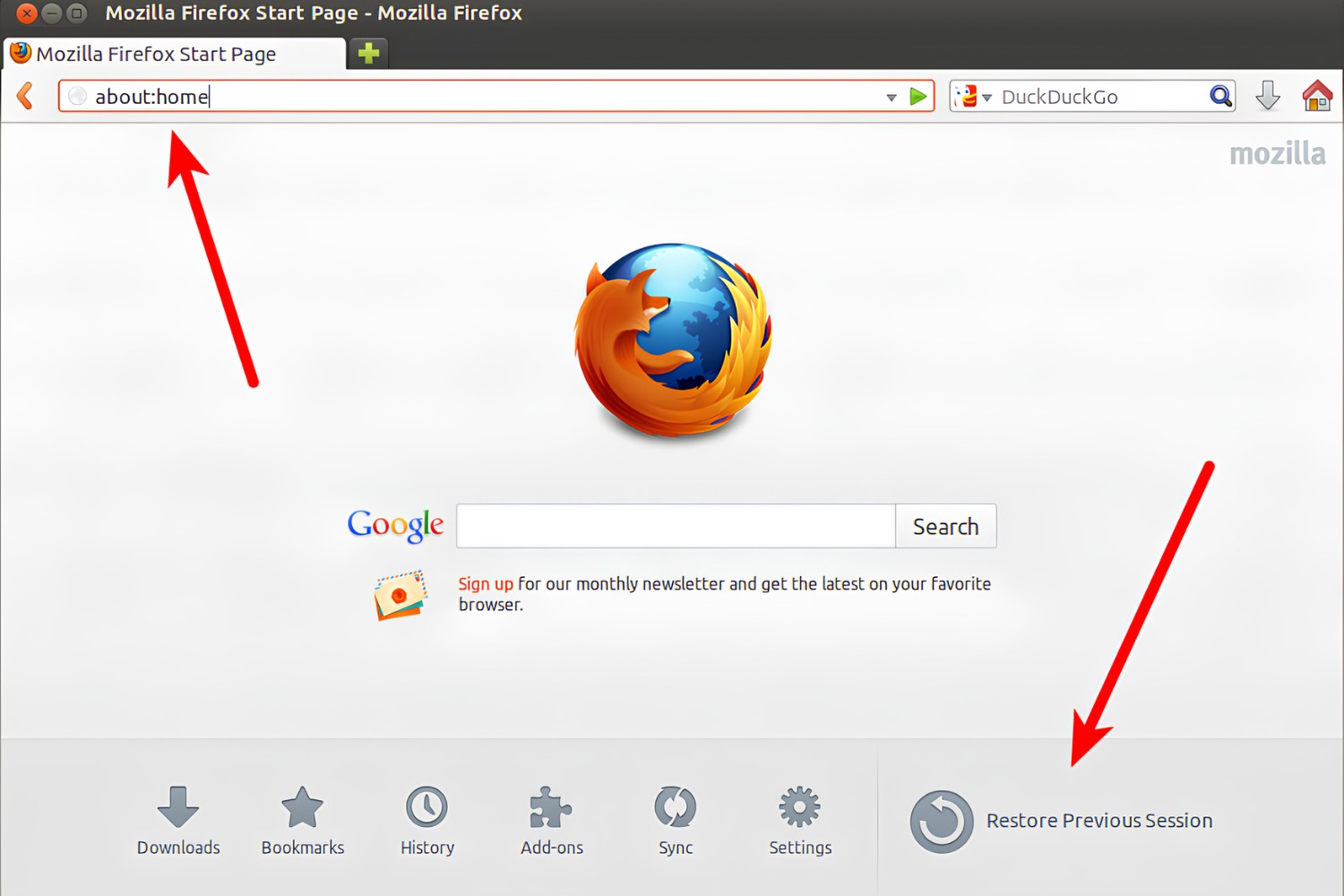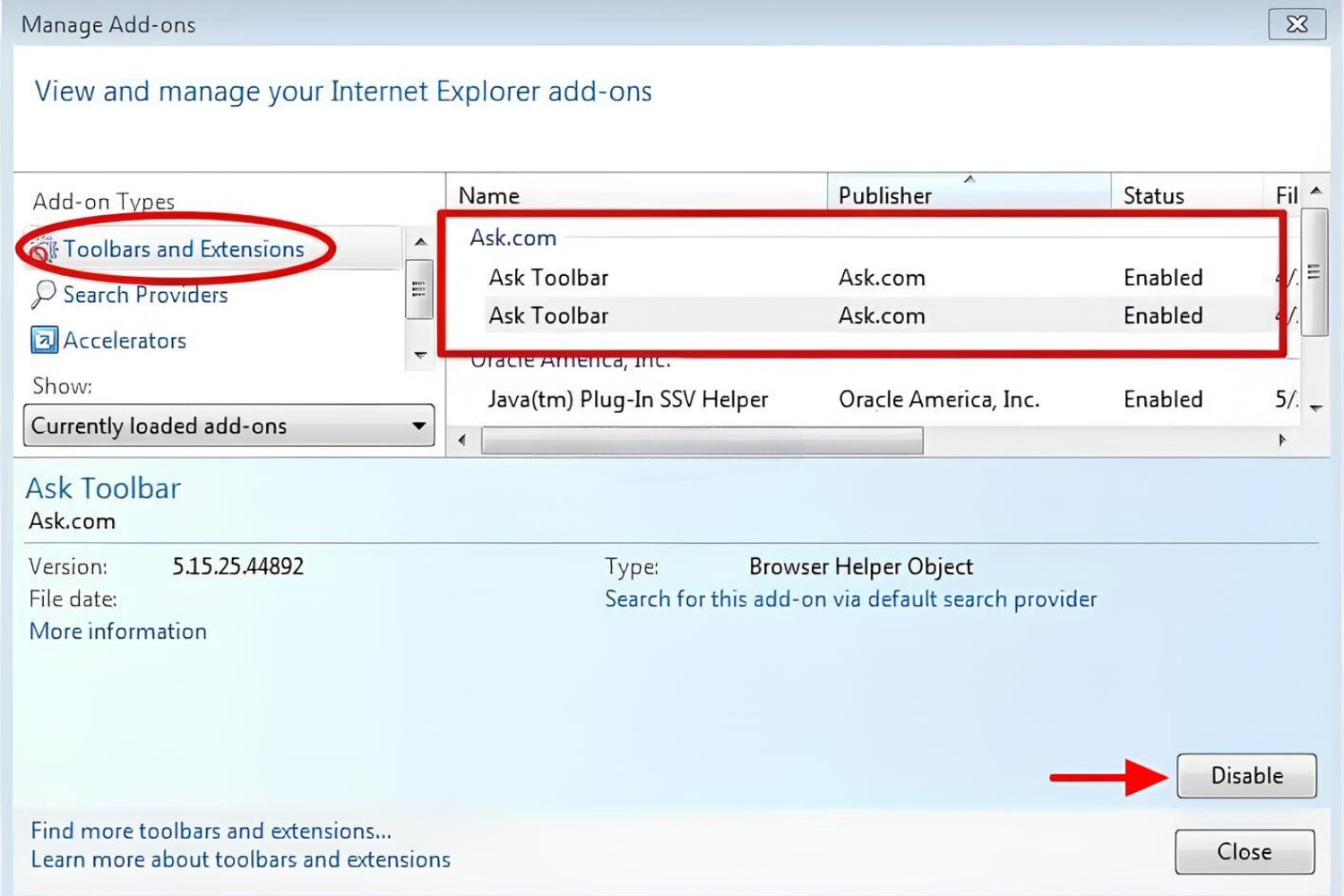Introduction
Uninstalling Firefox completely from your computer may seem like a straightforward task, but it's essential to ensure that all associated files, folders, and registry entries are removed to achieve a clean uninstallation. Whether you're experiencing issues with Firefox, switching to a different browser, or simply looking to perform a thorough cleanup, it's crucial to follow a systematic process to ensure that no remnants of Firefox are left behind.
In this comprehensive guide, we will walk you through the step-by-step process of completely uninstalling Firefox from your Windows computer. By following these instructions, you can rest assured that all components of Firefox will be effectively removed, allowing you to perform a fresh installation or transition to a different browser without any lingering traces.
Uninstalling software from your computer is not just about removing the main program; it also involves eliminating any residual files, folders, and registry entries that may remain after the standard uninstallation process. This is particularly important for browsers like Firefox, which create various system files and settings during their usage. By thoroughly uninstalling Firefox, you can free up valuable disk space and ensure that your system remains optimized for peak performance.
So, if you're ready to bid farewell to Firefox and want to ensure a complete removal of all associated components, let's dive into the step-by-step process of uninstalling Firefox from your Windows computer. Follow each step carefully to achieve a thorough and effective uninstallation, leaving your system free from any remnants of the Firefox browser.
Step 1: Close Firefox and backup your data
Before initiating the uninstallation process for Firefox, it is crucial to ensure that all active instances of the browser are closed. This includes any open tabs, windows, or background processes associated with Firefox. By closing the browser, you can prevent any potential conflicts or interruptions during the uninstallation process, allowing for a smoother and more effective removal of the software.
To close Firefox, simply click on the 'X' button located at the top-right corner of the browser window. If you have multiple tabs open, you can also use the 'File' menu to select 'Exit' or use the keyboard shortcut 'Ctrl + Shift + Q' to close all open tabs and windows simultaneously. It's important to verify that no Firefox processes are running in the background, as these can interfere with the uninstallation process.
Once Firefox is closed, the next crucial step is to backup any essential data associated with the browser. This includes bookmarks, saved passwords, browsing history, and any custom settings or preferences that you may want to retain. Firefox provides a convenient built-in feature for creating a backup of your data, ensuring that you can easily restore it after the uninstallation process is complete.
To backup your Firefox data, follow these steps:
- Open Firefox and click on the 'Open menu' button (three horizontal lines) located at the top-right corner of the browser window.
- From the menu, select 'Library' and then click on 'Bookmarks' followed by 'Show All Bookmarks'.
- In the Library window, click on 'Import and Backup' and then select 'Backup…' to create a backup file containing your bookmarks and browsing history.
Additionally, if you want to backup your saved passwords and other browsing data, you can utilize the 'Sync' feature provided by Firefox. By syncing your data with a Firefox account, you can ensure that your bookmarks, passwords, and other settings are securely stored in the cloud, ready to be restored on a different device or after a fresh installation of Firefox.
By closing Firefox and backing up your essential data, you can proceed with confidence to the next steps of the uninstallation process, knowing that your important information is safely preserved. With these preparations in place, you are ready to move on to the next phase of completely uninstalling Firefox from your Windows computer.
Step 2: Uninstall Firefox from Control Panel
Uninstalling Firefox from the Control Panel is a fundamental step in the process of completely removing the browser from your Windows computer. The Control Panel serves as a centralized platform for managing installed programs, allowing users to uninstall software and make system-wide configurations. By following the steps outlined below, you can effectively uninstall Firefox from your computer using the Control Panel.
-
Access the Control Panel: To begin the uninstallation process, navigate to the Control Panel on your Windows computer. You can access the Control Panel by clicking on the Start menu and searching for "Control Panel" or by right-clicking on the Start button and selecting "Control Panel" from the context menu. Once the Control Panel is open, proceed to the next step.
-
Navigate to "Programs and Features": Within the Control Panel, locate the "Programs" category and click on the "Uninstall a program" link. This will open the "Programs and Features" window, which displays a list of all installed programs on your computer.
-
Locate Firefox in the Program List: In the "Programs and Features" window, scroll through the list of installed programs to locate "Mozilla Firefox." You can also use the search function within the window to quickly find Firefox by typing "Firefox" in the search bar.
-
Initiate the Uninstallation Process: Once Firefox is located in the program list, select it by clicking on it to highlight the entry. With Firefox selected, click on the "Uninstall" or "Change" button located at the top of the window. This will initiate the uninstallation process for Firefox.
-
Follow the Uninstallation Wizard: After clicking the "Uninstall" or "Change" button, a confirmation dialog or uninstallation wizard will appear, guiding you through the process of removing Firefox from your computer. Follow the on-screen instructions to proceed with the uninstallation, which may include confirming the action and selecting additional options, such as removing user data or custom settings.
-
Complete the Uninstallation: Once the uninstallation process is initiated, the system will proceed to remove Firefox from your computer. This may take a few moments, depending on the size of the browser and associated components. Once the process is complete, you will receive a confirmation message indicating that Firefox has been successfully uninstalled.
By following these steps, you can effectively uninstall Firefox from your Windows computer using the Control Panel. This method ensures that the main program and associated components are removed, paving the way for a clean and thorough uninstallation of Firefox. With Firefox successfully uninstalled from your system, you can proceed to the next steps of deleting leftover files, folders, and registry entries to complete the removal process.
Step 3: Delete leftover files and folders
After uninstalling Firefox from the Control Panel, it's essential to address any residual files and folders that may remain on your computer. These leftover components, if not removed, can occupy disk space and potentially interfere with future installations or system performance. To ensure a thorough cleanup, follow the steps below to delete the remaining Firefox files and folders from your Windows computer.
-
Navigate to the Firefox Installation Directory: Begin by locating the directory where Firefox was installed on your computer. By default, Firefox is typically installed in the "Program Files" or "Program Files (x86)" directory on the system drive. Navigate to this location using File Explorer to access the Firefox installation folder.
-
Delete the Firefox Installation Folder: Once you have located the Firefox installation directory, right-click on the folder and select "Delete" from the context menu. Confirm the action when prompted to remove the entire Firefox installation folder, including any remaining program files and associated resources.
-
Remove User Data and Profile Folders: In addition to the main installation folder, Firefox creates user-specific data and profile folders to store settings, bookmarks, and other personalized information. These folders are typically located in the user's AppData directory. To delete these folders, navigate to the following paths:
- For Windows 10/8/7: C:\Users\YourUsername\AppData\Roaming\Mozilla\Firefox\Profiles
- For Windows XP: C:\Documents and Settings\YourUsername\Application Data\Mozilla\Firefox\Profiles
-
Permanently Delete the Profile Folders: Within the Profiles directory, locate the folders corresponding to your Firefox profiles. These folders are named with random alphanumeric characters followed by a dot and the profile name (e.g., xxxxxxxx.default). Right-click on each profile folder and select "Delete" to remove them permanently.
-
Empty the Recycle Bin: After deleting the Firefox installation folder and user data/profile folders, it's important to empty the Recycle Bin to completely remove these files from your computer. Right-click on the Recycle Bin icon on your desktop and select "Empty Recycle Bin" to free up the disk space occupied by the deleted Firefox files.
By following these steps, you can effectively remove any leftover files and folders associated with Firefox from your Windows computer. This ensures a comprehensive uninstallation of the browser, leaving your system free from any remnants of Firefox and optimizing disk space for future use. With the residual files and folders successfully deleted, your computer is now primed for a clean transition to a different browser or a fresh installation of Firefox.
Step 4: Remove Firefox registry entries
The Windows Registry serves as a centralized database that stores configuration settings, options, and system information for the operating system and installed applications. When Firefox is installed on a Windows computer, it creates various entries in the registry to manage its settings, preferences, and integration with the operating system. To achieve a complete uninstallation of Firefox, it is crucial to remove these registry entries to ensure that no traces of the browser remain in the system's configuration.
Before proceeding with the removal of Firefox registry entries, it is important to emphasize the significance of handling the Windows Registry with caution. Making incorrect changes or deletions in the registry can potentially impact the stability and functionality of the operating system. Therefore, it is highly recommended to create a backup of the registry or create a system restore point before modifying the registry to safeguard against any unforeseen issues.
To remove Firefox registry entries, follow these steps:
-
Access the Registry Editor: Press
Windows Key + Rto open the Run dialog, then typeregeditand press Enter. This will launch the Registry Editor, providing access to the Windows Registry. -
Navigate to the Firefox Registry Keys: In the Registry Editor, navigate to the following key by expanding the folders in the left pane:
HKEY_CURRENT_USER\Software\Mozilla
HKEY_LOCAL_MACHINE\Software\Mozilla -
Delete Firefox Registry Keys: Within the
Mozillakey, locate the subkeys and entries related to Firefox. Right-click on each Firefox-related subkey or entry and select "Delete" from the context menu. Confirm the deletion when prompted. This process removes the specific registry configurations associated with Firefox. -
Search for Additional Firefox Entries: While still in the Registry Editor, use the search feature (press
Ctrl + F) to search for any remaining instances of "Firefox" within the registry. Delete any additional keys or entries related to Firefox that are found during the search process. -
Verify the Deletion: After removing the Firefox registry entries, it is advisable to restart your computer to ensure that the changes take effect. Upon rebooting, verify that the Firefox registry entries have been successfully removed by navigating back to the previously mentioned registry keys and confirming that all Firefox-related subkeys and entries have been eliminated.
By following these steps, you can effectively remove the registry entries associated with Firefox, ensuring a thorough and complete uninstallation of the browser from your Windows computer. This process helps to maintain the integrity of the Windows Registry and prevents any lingering configurations from impacting future system operations. With the Firefox registry entries successfully removed, your system is now free from any remnants of the browser, allowing for a clean transition to an alternative browser or a fresh installation of Firefox.
Step 5: Clean up temporary files and settings
After uninstalling Firefox and removing its associated files, it's essential to address any temporary files and settings that may have been generated during the browser's usage. These temporary files, often referred to as cache and residual settings, can accumulate over time and occupy valuable disk space on your computer. By cleaning up these temporary files and settings, you can ensure a thorough and comprehensive removal of Firefox from your Windows system, optimizing its performance and storage capacity.
To clean up temporary files and settings, follow these steps:
-
Clear Firefox Cache and Temporary Files: Although Firefox is uninstalled, its cache and temporary files may still remain on your computer. To address this, you can utilize the built-in functionality within Firefox to clear its cache and temporary files before the uninstallation process. Open Firefox and navigate to the "History" menu, then select "Clear Recent History." In the dialog box that appears, choose the time range and ensure that "Cache" is selected. Click "Clear Now" to remove the cached files and temporary data associated with Firefox.
-
Utilize Disk Cleanup Tool: Windows provides a Disk Cleanup tool that allows you to remove temporary files, system files, and other unnecessary items from your computer. To access Disk Cleanup, simply type "Disk Cleanup" in the Windows search bar and select the corresponding utility. Once open, select the drive where Firefox was installed (usually the C: drive) and click "OK." The tool will then calculate the amount of space that can be freed up by removing temporary files. Review the list of file categories and select the items you want to clean, then click "OK" to initiate the cleanup process.
-
Delete Temporary Files Manually: In addition to using the Disk Cleanup tool, you can manually delete temporary files and folders from your computer. Navigate to the following directories and delete any temporary files associated with Firefox:
- C:\Users\YourUsername\AppData\Local\Temp
- C:\Windows\Temp
-
Review and Optimize System Settings: After cleaning up temporary files, it's beneficial to review and optimize system settings that may have been affected by the presence of Firefox. This includes checking startup programs, system services, and scheduled tasks to ensure that no remnants of Firefox are impacting system performance. You can use the "Task Manager" and "System Configuration" tools in Windows to manage these settings and optimize your system for peak performance.
By following these steps to clean up temporary files and settings, you can ensure a thorough and effective removal of Firefox from your Windows computer. This process not only frees up disk space but also contributes to the overall optimization of your system, preparing it for a clean transition to a different browser or a fresh installation of Firefox. With temporary files and settings successfully cleaned up, your computer is now primed for continued usage without any lingering traces of the Firefox browser.
Conclusion
In conclusion, the process of completely uninstalling Firefox from your Windows computer involves a systematic approach to ensure that all associated components, including files, folders, registry entries, and temporary settings, are thoroughly removed. By following the step-by-step guide outlined in this comprehensive uninstallation process, you can achieve a clean and effective removal of Firefox, leaving your system free from any remnants of the browser.
The journey begins with the essential steps of closing Firefox and backing up your data. By ensuring that all active instances of the browser are closed and creating a backup of your essential data, including bookmarks, saved passwords, and browsing history, you set the stage for a smooth transition to a different browser or a fresh installation of Firefox.
Moving on to the uninstallation process from the Control Panel, you can effectively remove the main program and associated components of Firefox, paving the way for a clean uninstallation. This fundamental step sets the groundwork for addressing any residual files and folders, which is crucial in reclaiming valuable disk space and ensuring that your system remains optimized for peak performance.
The meticulous removal of Firefox registry entries is a critical aspect of the uninstallation process, as it helps maintain the integrity of the Windows Registry and prevents any lingering configurations from impacting future system operations. By navigating the Windows Registry with caution and removing the specific entries related to Firefox, you can achieve a comprehensive cleanup of the browser's registry settings.
Finally, the cleanup of temporary files and settings plays a pivotal role in completing the uninstallation process. By clearing Firefox's cache and temporary files, utilizing the Disk Cleanup tool, and manually deleting temporary files, you can ensure that your system is free from any residual data associated with Firefox, contributing to its overall optimization.
In essence, the thorough and systematic approach outlined in this guide empowers you to bid farewell to Firefox with confidence, knowing that your Windows computer is free from any remnants of the browser. Whether you are transitioning to a different browser or planning a fresh installation of Firefox, the completion of this uninstallation process sets the stage for a seamless and optimized computing experience.
By following these steps, you can effectively remove Firefox from your Windows computer, ensuring a clean and thorough uninstallation that leaves your system primed for continued usage without any lingering traces of the Firefox browser.

























